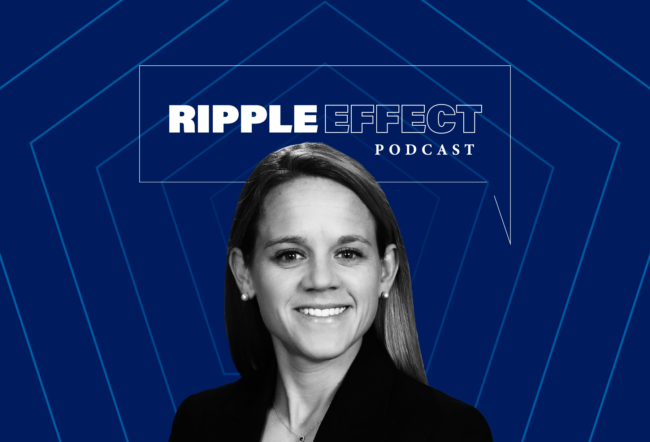For years, retailers and manufacturers of consumer products have taken for granted the notion that attractive presentation and a bit of whimsy profoundly influence most shoppers’ purchasing decisions. In his 1999 book Why We Buy: The Science of Shopping, psychologist and market researcher Paco Underhill described supermarkets “as places of high impulse buying…. Fully 60% to 70% of purchases there were unplanned, grocery industry studies have shown us.”
Underhill’s book and subsequent studies have since prompted retailers to devote growing resources to in-store promotion — for example, featuring certain products at the ends of aisles and in checkout lines to encourage impulse buying.
But Wharton marketing professor David R. Bell and two colleagues beg to differ, describing the idea that most supermarket purchases are unplanned as something of an urban legend. In a new research paper, “Unplanned Category Purchase Incidence: Who Does It, How Often and Why,” Bell and his co-authors arguethat the amount of unplanned buying is closer to 20%.
Their research does not indicate that in-store marketing is unimportant, but that retailers may need to rethink strategies for it. The researchers found that certain traits of shoppers, including age, income and their particular shopping style, have a greater effect on making unplanned purchases than does the store or environment.
In other words, Bell says, “the differences are based on who they are rather than what they’re exposed to. It relates to the issue of nature vs. nurture. Is it demographics or the in-store stimulus? The prevailing view is it’s more nurture. We’re saying it’s more nature.”
Bell’s co-authors are Daniel Corsten, professor of operations and technology at the Instituto de Empresa Business School in Madrid, and George Knox, professor of marketing at Tilburg University in the Netherlands. Their paper is based on a detailed study of grocery shoppers’ behavior in the Netherlands, but the findings can be applied generally to American retailers as well, Bell says.
The researchers began by reviewing a substantial body of academic literature that appears to support Underhill’s estimate of unplanned purchasing activity. The authors say that the literature, partially underwritten by the Grocery Marketing Association and the Point of Purchase Advertising Institute, has fueled the substantial growth of in-store marketing budgets in recent years.
“The debate over the extent of unplanned purchasing and the underlying drivers has enormous practical significance,” the authors write. “It dictates where marketing dollars are spent (in store or outside the store) and in what amounts.”
Looking at Real Purchases
What the researchers found missing in the previous studies was “appropriate and robust” data from actual purchases that would indicate what shoppers’ intentions were when they went to a store. The previous studies also did not clearly define “unplanned purchases” to Bell and his colleagues’ satisfaction. Does it mean switching brands of detergent from what a shopper usually buys, or buying any product from a category not on a shopping list? And if a shopping list included detergent but not a brand or size, is the final purchase planned or unplanned?
The starting point for Bell’s study, which was partially funded by a large European consumer products company, was a review of data from 2,945 supermarket shoppers over a two-week period in July 2006. The consumers shopped at 21 different supermarkets, making 18,000 purchases in 58 categories, such as bread, beer, coffee, produce, detergent, diapers and shampoos and conditioners.
The shoppers completed short questionnaires after each trip, checking off purchases in a category and indicating whether a purchase was “planned in advance of the store visit” or simply “decided in store and purchased.” The shoppers attached their store receipts to ensure accuracy. More information on household traits and perceptions of the supermarkets where they shopped was gathered in 90-minute in-home interviews.
The questionnaire and the interviews provided Bell, Corsten and Knox with demographic data, including income bracket and life stage; “shopping style” information, including whether a shopper considered himself “fast and efficient”; and whether the shopper learned about prices from newspaper advertising or in the store. The respondents also were asked about their knowledge of a particular store and its prices, range of offerings and image; if they shopped on weekdays or weekends; and whether shopping trips were long or short.
Bell noted that American shoppers are different from their Dutch counterparts in at least one respect that may merit further study. While most Americans drive to a grocery store, people in the Netherlands are just as likely to walk or ride a bicycle as they are to drive. The researchers found that shoppers who walk to a market are less likely to make unplanned purchases than those who bike or drive.
The most basic information the research revealed is that no unplanned buying was done on slightly more than 60% of all shopping trips. On the rest of the trips, the shoppers made an average of three unplanned purchases — far fewer than previous research indicated.
The amount of unplanned buying goes up with the total number of categories in which shoppers make purchases, such as bread or milk. But because a smaller percentage of shoppers are doing much of the impulse buying, the average number of unplanned purchases stays low.
More telling data about what makes shoppers behave as they do came from correlating 32 variables with the fact that the majority of all shopping trips include no unplanned purchasing. Here are some of the variables compared with the overall average:
- Young, unmarried adult households with higher incomes do 45% more unplanned buying.
- Households led by an older person and those that have larger families do 31% to 65% less spontaneous purchasing.
- There is 25% less unplanned buying among shoppers who mainly use newspaper ads for price information.
- People who consider themselves very “fast and efficient” shoppers are far less likely to make impulse buys — 82% less than the average.
- If the purpose of a shopping trip is “immediate needs or forgotten items,” the rate of buying in unplanned categories falls by 53%.
- Unplanned purchasing goes up by 23% if the shopping trip itself is unplanned, but it goes down by 13% if it’s a major or weekly trip.
- If a shopping trip includes stops at multiple stores, there is 9% less unplanned buying at the second or third store.
- Unplanned purchasing goes up by 44% if the shopper goes to the store by car instead of on foot.
“The message … is that the amount of unplanned buying that takes place is more about person-to-person variance than about the store environment itself,” Bell says. “Can you really jack up unplanned buying with stimuli, when the greatest amount of variance is in people?”
Two Strategies Emerge
The answer to that question, according to Bell and his fellow researchers, is yes, but it will take sales strategies based on more thinking and market research. The researchers note that their data has enough detail to enable them to offer two possible strategies retailers could use to increase spontaneous purchasing in their stores.
“They can ‘do more’ with existing customers, or they can make a deliberate attempt to attract … shoppers who are more likely to make unplanned purchases,” they write. “The ‘do more’ strategy takes the existing mix of shoppers as given and focuses on the in-store environment. The ‘attract better customers’ strategy involves a broader change to marketing strategy, store image and so on.”
The data indicate that the “do more” approach, using, say, better in-store signage or increasing the number of promotions, would be less difficult but perhaps less effective than trying to attract more customers who are inclined to do more unplanned purchasing. The benefits of the two strategies would need to be weighed against the cost.
“Overall, traits [of customers] appear more important than states [of stores] in generating unplanned category purchase incidence,” the researchers write. “This raises some important questions for both retailers and their suppliers. Retailers may wonder if their current in-store marketing budgets are too high. Suppliers might want to revisit budget allocations: Should they re-prioritize marketing activities designed to place the brand firmly into the shoppers’ [planned purchases]?
“More fundamentally, this research suggests that different consumer segments have different and varying ‘receptivity’ to different marketing activities. If so, marketers need to develop … plans with an understanding of these varying levels of receptivity in mind.”
Bell suggests that one possible avenue for learning more about how much impulse buying a person might do is to use the data retailers collect through their customer-loyalty programs. “They need to learn more about the shopper from a holistic perspective.”
Culture and Marketplace Effects on Perceived Price Fairness: China and the USA



